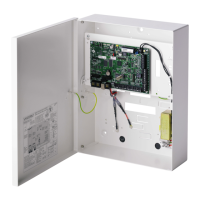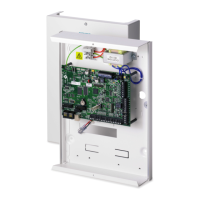Installation & Configuration Manual
When alerts are displayed, the down arrow key moves the user to the next
alert message in the order of priority. (See section on Prioritization of Display
Messages)
In Programming mode, the left arrow key returns the user to the previous menu
level. Pressing this key when in the top menu level exits the user from
programming.
In data entry mode, press this key to move the cursor one position to the left.
In Programming mode, the up arrow key moves the user to a previous
programming option in the same menu level. Continually press this key to
scroll through all programming options available on the current menu level.
In Alphanumeric mode, press this key over a lower case character to change
the character to upper case.
This key is used to select the option presented on the left side of the bottom
line display.
Possible values are:
→ EXIT to exit programming
→ BACK to return to previous menu
In the IDLE state, this line is blank.
In Programming mode, this line displays options available to the user. These
options align over the left and right soft keys for selection as required.
In the IDLE state, displays the current date and time. In Programming mode,
this line displays one of the following:
→ The programming feature to be selected
→ The current setting of the selected feature
→ The nature of the current alert during an alert condition. (See Prioritization of
Display Messages below)
Prioritization of display messages
Trouble messages and alerts are displayed on the keypad in the following order:
Zone
– Alarms
– Tamper
– Trouble
Area Alerts
– Fail to set
– Entry time out
– Code tamper
System Alerts
– Mains
– Battery
– PSU fault
– Aux fault
– External bell fuse
– Internal bell fuse
– Bell tamper
– Cabinet tamper
– Aux tamper 1
– Aux tamper 2
– Wireless jamming
– Modem 1 fault
– Modem 1 line
– Modem 2 fault
– Modem 2 line
